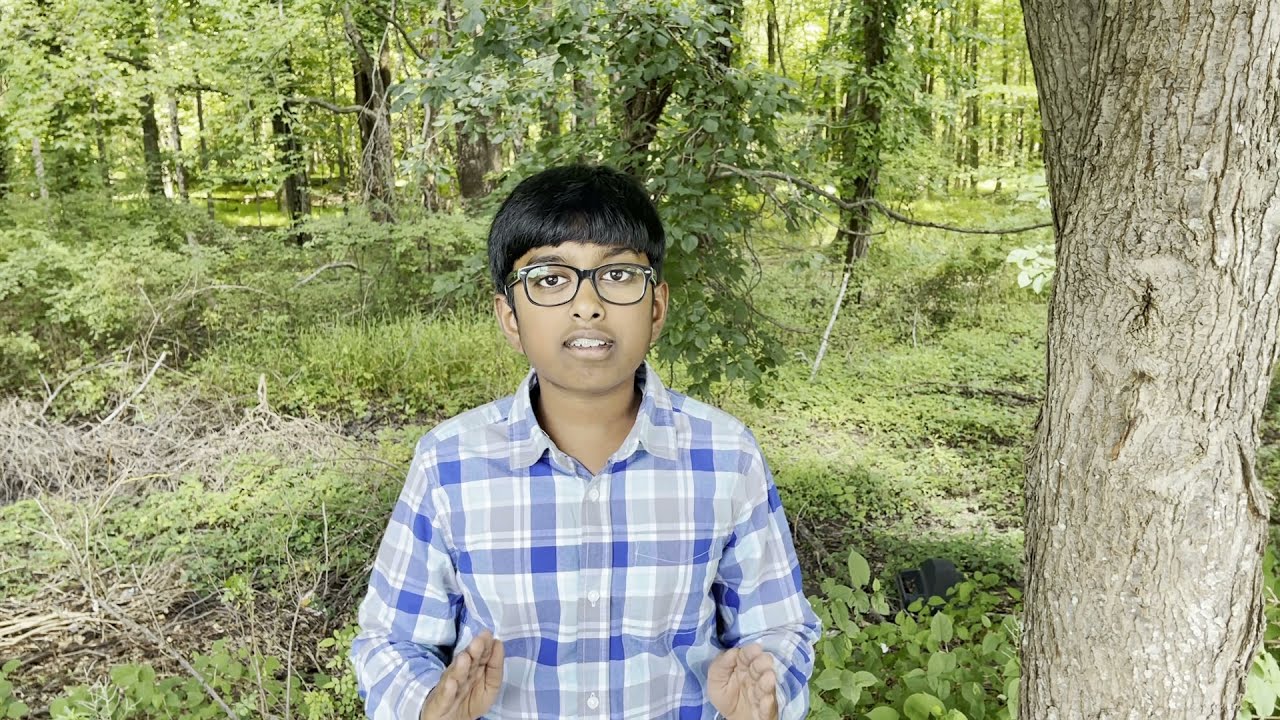(December 28, 2021) Three years ago, a young Swedish girl made the world stop in its tracks by emphasising the extent of environmental damage in the world. Her fervent plea was to ask if this is the world we were leaving behind for our children. At a UN climate conference in New York, Indian youth, Greta Thunberg delivered her most famous speech where she berated world leaders, “You all come to us young people for hope. How dare you? You have stolen my dreams and my childhood with your empty words.” Even as Thunberg continues to propagate change with her climate activism, a host of children the world over continues to work and innovate to provide solutions to help mitigate climate change. Of these, are several Indian-origin activists. From nine-year-old Prasiddhi Singh who’s planting fruit forests to increase green cover, Bengaluru-based Sahithi Pingali, who developed an app to help clean lakes, Karan Jerath who worked to address one of the largest marine oil spills, to US-based Nihal Tammana whose recyclemybattery.com helps recycle toxic batteries, and Udit Singhal, who’s working to create a zero-waste ecosystem through his company Glass2Sand.
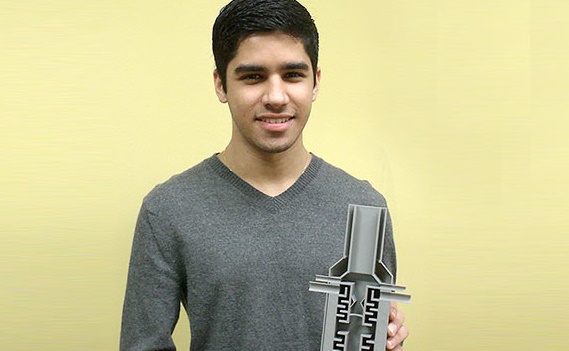
Karan Jerath
The future is young Indian
According to findings from the Future of Work international research report, over 85 percent of young people in India are interested in a green job. About 84 percent of those surveyed also believe that their generation can create solutions to some of society’s biggest challenges. Quite a tall order for young minds.
“Young people, at the end of the day, want to be agents of change in an effort to prevent and adapt to the climate crisis, and the biodiversity crisis. For what it’s worth, I believe it is our responsibility to help them achieve this, if we possibly can,” observed Prince Charles, in a meeting with international business leaders at St James’ Palace in London earlier this year.
As the focus has begun to gradually shift towards creating sustainable job opportunities for the future, these young minds are waiting for no one. They’re marching right on in their quest to create sustainable futures through their innovations and campaigns.
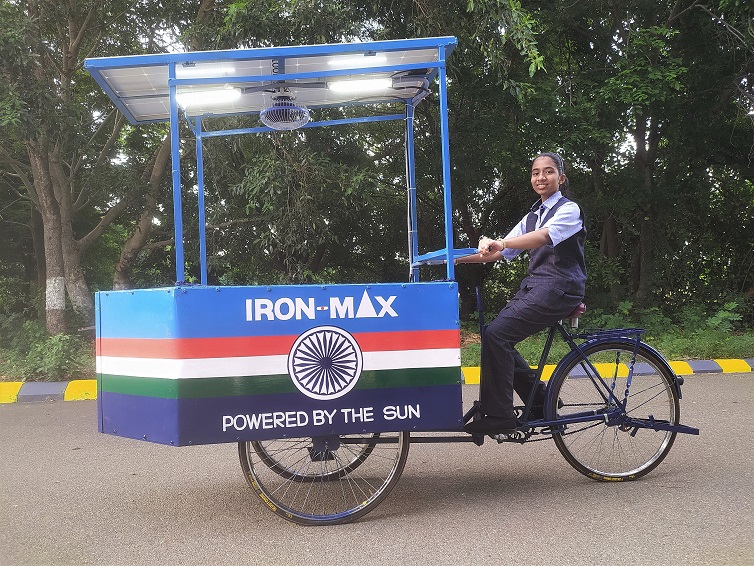

Vinisha Umashankar
Take for instance Vinisha Umashankar, the 14-year-old innovator from Tamil Nadu who was invited to speak at the COP25 in Glasgow by Prince William to speak on clean technology and innovation. Incidentally, the high school student from the small temple town of Tiruvannamalai, designed a solar-powered iron cart called the Iron-Max. The cart is an alternative to the charcoal burning ironing carts that dot Indian streets and the invention also earned her the Earthshot Prize (or Eco Oscars) that was launched by Prince William.
Talking about her invention, Vinisha said in a tweet, “The big ‘problem’ I am trying to solve is to eliminate the practise of burning charcoal to heat an iron box for pressing clothes by vendors. My innovation, the solar ironing cart will save trees, reduce air pollution, protect the environment and help stop the climate change.”
Similarly, Delhi-based teen Udit Singhal is working to help create a zero-waste ecosystem through his startup Glass2Sand, which has so far processed over 8,000 bottles into over 4,815 kg of high-grade silica sand. The 18-year-old was named by the UN in the 2020 cohort of young leaders for sustainable development goals. In a statement, Singhal said, “As a Young Leader for the SDGs, I will be an active agent of change. I hope to be able to encourage communities to embrace a better civic sense to create sustainable living spaces — like when mountain-high landfills are detonated.”
Working along similar lines is 23-year-old Ashay Bhave, who launched Thaely, a sustainable line of vegan sneakers to tackle the growing menace of plastic waste. Bhave’s company produces sneakers that are made from plastic trash and so far, he has managed to upcycle over 50,000 bags and 35,000 bottles into sneakers that not just look chic but are also environment friendly.
Saving the planet with sustainability
These young minds are also mindful of the fact that rapid urbanisation has led to the reclaiming of precious eco-rich areas of land leading to mass extinctions that the Earth is now witnessing. Taking a step to change this is Mumbai- based conservation photographer Aishwarya Sridhar, who is the first Indian to win the prestigious Wildlife Photographer Award. “I believe in harnessing the power of visuals to bring about change,” says this 24-year-old, who took up conservation photography at age 11. “I hope my images and videos inspire people to become guardians of our planet,” she tells Global Indian Youth.
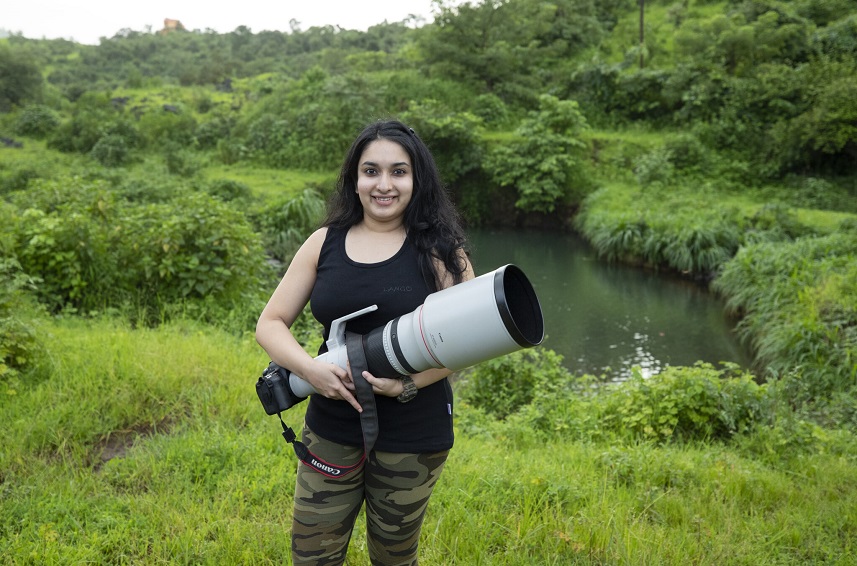

Aishwarya Sridhar
“I grew up in Panvel and have seen the stark difference in the Panvel of my childhood and the Panvel of today. From being lush with greenery and wildlife, today it is a concrete jungle that I don’t recognise. I grew up watching flamingoes and painted storks in my backyard. Today, however, the only surviving wetland in the area is a 250-acre space in Uran. Most wetlands and mangroves in Navi Mumbai have been reclaimed for SEZs and other real estate projects,” says the youngster, who has been actively campaigning to bring about a real change. In fact, her images also led the Bombay high court to declare that the Panje wetland area should be an ecologically-protected zone. Earlier this year, Aishwarya also did an undercover operation where she shot images of fireworks being set off in the Panje area. The images went viral and led to the Maharashtra CM intervening and ensuring prosecution of the miscreants.
Being the change
The idea, feel most youngsters, is to not just protect our planet, but to protect ourselves from the effects of climate change and the resultant mass extinction. Nine-year-old Prasiddhi Singh too found herself struck by the devastating effects of cyclone Vardah in 2016 which led to thousands of trees being uprooted and an overnight depletion of green cover in Tamil Nadu. The Chennai-based school goer swore to do her bit for the environment and is now on a mission to plant 1 lakh trees by 2022.
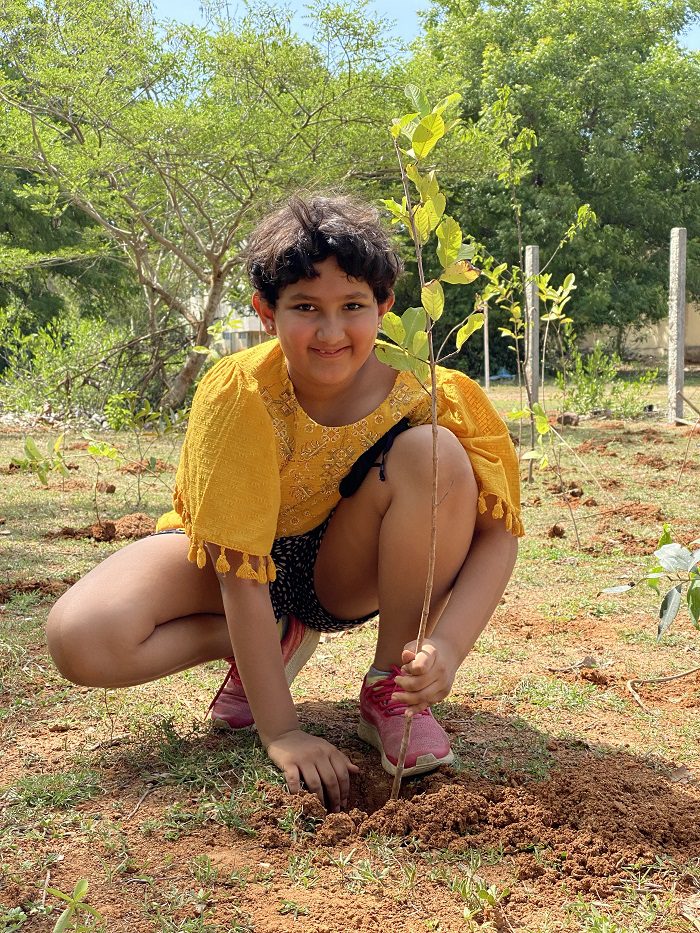

Prasiddhi Singh
“So far, I have created 19 fruit forests and planted 23,000 trees. I formed an unconditional bond with nature. I believe I can create a significant contribution in bringing about change,” says the TEDx speaker and green activist who raised funds for her campaigns through online webinars and sessions on how to become an impact creator. Even the prize money this Pradhan Mantri Rashtriya Bal Puraskar awardee got was donated to an NGO.
As more and more Indian-origin children ideate on environment friendly solutions, small inroads have finally been made into areas where most governments are still dragging their feet. From policy changes to awareness drives and innovations to change the future, these kids certainly seem to have a finger on the way forward.
The work the Indian youth do
- Karan Jerath: Following the 2010 Deepwater Horizon Oil Spill, Indian-origin student Karan Jerath was determined to find a solution. He went on to invent a subsea wellhead capping device to contain the oil spill. He won the Young Scietist Award at the Intel International Science and Engineering Fair in 2015 and was the youngest honoree on the 2-16 Forbes 30 Under 30 Energy list.
- Sahithi Pingali: At 16, this Bengaluru girl bagged the Grand NASA Prize and even had a planet in the Milky Way named after her for her insightful study on the pollution of lakes in her city. Pingali participated in the Intel International Science and Engineering Fair and used her self-programmed app and a self-made lake monitoring kit to crowdsource data on environmental issues.
- Nihal Tammana: The New Jersey-based seventh grader has been tirelessly working to rid the world of battery pollutants through his startup Recycle My Battery. The company recycles all types of used batteries and Tammana has been awarded the NJ Governor’s Award and the Jefferson Award for his work.



